| EARLY LEVEL | TECHNOLOGIES | |
| Experiences and Outcomes | Benchmarks | |
| Organiser – Digital Literacy | • Recognises different types of digital technology
• Identifies the key components of different types of digital technology. • Logs on to a preferred device with a given password. • Identifies icons for different applications. • Opens and close a pre-saved file. • Identifies and consistently use the close icon. • Uses digital technologies in a responsible way and with appropriate care. |
|
|---|---|---|
| Using Digital Products & Services in a variety of contexts to achieve a purposeful outcome | ||
| I can explore digital technologies and use what I learn to solve problems and share ideas and thoughts
TCH 0-01a
Link with skills in Literacy – Writing – Tools for Writing LIT 0-21b |
||
 |
Progression |
|
| I can/am able to | I can/am able to | I can/am able to |
| Begin to recognise & name different types of digital technology & their component parts e.g. interactive whiteboard, computer, tablet, phone, screen, keyboard, mouse, etc. | Recognise & name familiar digital devices & say what they can do.
Begin to identify most of the component parts of familiar digital devices & say what they are for or what they do. |
Recognise & name a wider range of digital devices & say what they can do.
Identify the component parts of a broader range of digital devices & say/show what they are for & how they are used. |
|
When learning about how things work learners might: * Play at a ‘tinker table’ or ‘exploration station’ where they can explore and experiment with a variety of digital devices, * Investigate what is inside different devices using a range of tools and instruments, such as: microscopes, shaving brushes to dust over, magnifying glasses or screwdrivers. * Suggest the possible faults and solutions to broken devices, for example: “The BeeBot is full of sand because it took a long turn into the sandpit.” * Look at online resources that support their understanding of how things work, such as: CBeebies ‘Maddie’s Do You Know’ |
||
|---|---|---|
| With support, identify & explore appropriate files, software, games or applications using digital devices. | With support, begin to identify, access & explore appropriate programmes, software, games, applications & files e.g. photo albums | Log in to preferred devices, websites & applications using given passwords e.g. to access & explore appropriate programs, files, software, games or applications. |
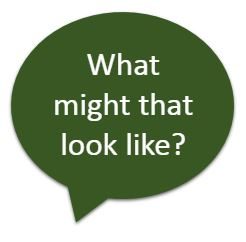 From Education Scotland National Improvement Hub “What digital learning might look like”: From Education Scotland National Improvement Hub “What digital learning might look like”:
When learning about sharing ideas with pictures and videos learners might: * Gather examples of landmarks and people in the local community by taking screen shots from Google Earth or Apple Maps Flyover |
||
| Begin to use my finger or a pen to drag & drop on a touch screen or interactive white board. | Begin to move & access files & functions using touch screens or a mouse.
With support, make increasing use of keyboard functions for a range of purposes & play. |
Use touch screens or mouse/keyboard with increasing confidence & skill to access digital technologies for a range of purposes e.g. spacebar, enter/return, backspace, shift keys. |
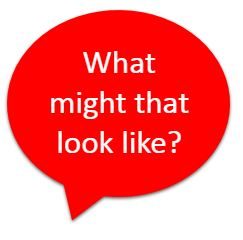 From Education Scotland National Improvement Hub “What digital learning might look like”: From Education Scotland National Improvement Hub “What digital learning might look like”:
When learning about understanding routines and procedures learners might: |
||
| With support, begin to start, open & close files, software, games or applications in the correct way. | With support, begin to routinely open & close files, software & applications correctly. | Identify & use icons for familiar applications, software & to open & close documents, files, etc. |
| With support, demonstrate careful & responsible use of digital technologies e.g. during play & for specific purposes. | Demonstrate careful & responsible use of a range of digital technologies e.g. still & video camera, tablets, consoles, programmable toys. | Demonstrate careful & responsible use of digital technologies including switching on, logging off & shutting down.
With support, begin to use the main navigation features of software packages e.g. main menu, start, home, back. |
|
“When learning about imaginative play learners might: * Play with programmable devices and technology, such as BeeBots and mobile devices, to experience the wonder of technology. This could then lead to learners solving problems in a relevant context to their play, for example: can they help the Gruffalo’s Mouse (BeeBot in disguise) find his way back home to the deep dark wood – using simple directional language to guide the Beebot along a path?” |
||
| With support, begin to recognise when & how digital technologies can help me solve problems & share ideas & thoughts. | Begin to independently recognise when & how digital technologies can help me solve problems & share ideas & thoughts. | Recognise when & how digital technologies can help me solve problems & share ideas & thoughts. |
|
“When learning about technology that helps us, learners might: * Explore a range of technology that provides support and makes life easier for them and others in society. Learners could start by exploring how the technology we have can provide instructions without text, such as text-to-speech (Immersive Reader) or talking buttons, or help us understand different languages with translation tools, such as Microsoft Translate app” |
||
|
|
||
|
|
||
|
|
||
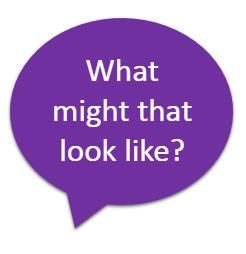 From Education Scotland National Improvement Hub “What digital learning might look like”:
From Education Scotland National Improvement Hub “What digital learning might look like”: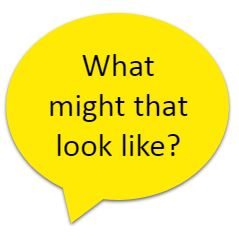 From Education Scotland National Improvement Hub “What digital learning might look like”:
From Education Scotland National Improvement Hub “What digital learning might look like”: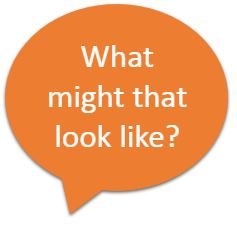 From Education Scotland National Improvement Hub “What digital learning might look like”:
From Education Scotland National Improvement Hub “What digital learning might look like”: